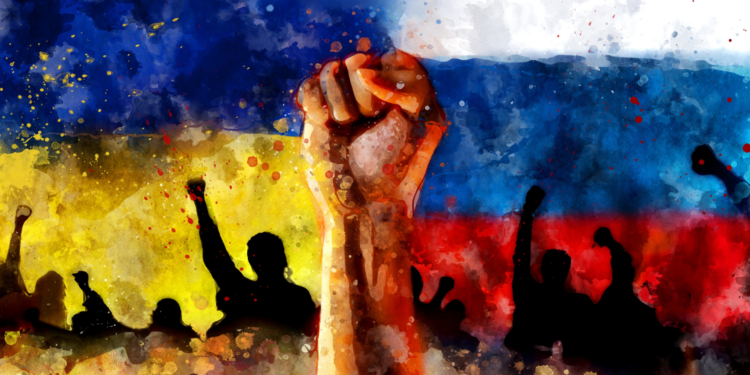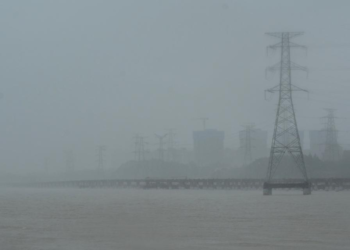The war in Ukraine, which began in 2014, has been a costly and devastating conflict that has had significant economic, social and humanitarian consequences. The conflict has had a particularly severe impact on the world economy at a time when the world suffers from a crippling post-covid 19 economy. The cost of the war in Ukraine has also been felt beyond the country’s borders. The conflict has had a destabilizing impact on the region, with tensions between Russia and other neighboring countries rising as a result. The conflict has also had a significant impact on global politics, with many countries becoming involved in efforts to resolve the conflict without any dangerous escalation. While some countries have put efforts to drag the two parties on the negotiating table, others have been continuously trying to prolong the deadly war by pumping dollars and weaponry to the battlefield. The political scientist John Mearsheimer terms the devastating war as a result of America’s attempt to include Ukraine in the West and make it a Western bulwark on Russia’s border. Since NATO issued a statement saying Georgia and Ukraine would become its members in 2008, political pundits say that the Russian state instantly drew a line in the sand. Now that the western efforts to make Ukraine a pro-American liberal democracy have snowballed into a deadly war, the U.S. and its allies are endlessly supplying modern war equipment and funds to the region that has, to a great extent, affected the world economy in numerous ways. According to a study by German Institute of Economics in February this year, the Ukraine war has cost the global economy “well over $1.6 trillion” last year. The global production losses are highly likely to cross another $1 trillion or more in the current year, the study adds. With energy prices skyrocketing day after day, the war in Ukraine has resulted in production and supply disruptions across the globe.
The staggering figures have forced political experts and international relations scholars in the field to question the western intention to mobilize funds and supply weapons to Kyiv. Although it is difficult to keep track of how much money is being allocated to Ukraine, some research institutes like the Keil Institute of the World Economy has come up with close-to-accurate figures of the money allocated to Ukraine by different countries. The research institute while drawing historical parallels to earlier wars involving U.S has stated that the total military expenditure of America on Ukraine in a single year has exceeded that of Afghanistan during almost ten years from 2001-2022. With the announcement of 37 billion euros in December last year, the United States of America has earmarked a total of over 73.1 billion euros for Ukraine followed by the EU which has designated 54.9 billion euros for support. US so far tops the list by a significant margin in providing military support to Kyiv. “The biggest contributor of military aid is by far the US with current commitments of 22.86 billion euros ($24.37bn). The United Kingdom has committed the second-largest amount, 4.13 billion euros ($4.40bn),” says Andre Frank, an economist at Keil Institute of the World Economy.
The economic impacts of the Ukraine war are complex and multifaceted, affecting countries across the world. The disruption of trade relations between Russia, EU, and other countries that depend on Russian exports has severely affected the global economy. The stoppage of Russian gas exports through Ukraine, an important transit country, has raised security concerns for the supply of gas, leading to fluctuations in gas prices. The depreciation of the Ukrainian currency, the hryvnia, and the reduction of the value of the Russian ruble has had a knock-on effect on other currencies around the world. Sanctions imposed by the west on Russia apparently benefit no one across the world. At a time when the global economy is in shambles, the US and EU continue to prolong the war only to see the Russian state at a strategic low point. International Monetary Fund in their analysis in March last year had warned of a major blow to the global economy, saying the war in Ukraine is reverberating across the world’s regions and the conflict is bound to hurt the growth and exponentially raise prices in global markets. Apart from the humanitarian crisis, the entire world economy is now feeling the effects of slower growth and faster inflation. Russia considered to be the world’s top fertilizer producer has not been able to trade with other nation-states, resulting in the soaring food prices and disruption of global trade that was still recovering from the pandemic. Experts in the field say that the European Union nations used to import half of their natural gas and a third of their oil from Russia before the escalation of conflict and the disruption of trade between the two has seen an overwhelming rise in energy prices on a scale not seen since the 1970s. There are already definite indications that the war and the ensuing increase in the price of necessities will make it more difficult for policymakers in some countries to strike the delicate balance between controlling inflation and assisting the economic recovery from the pandemic, even though some effects may not become fully apparent for many years.




















